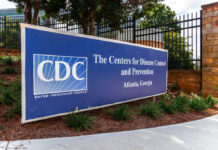
Despite global health efforts, a parasitic disease continues to endanger millions of children worldwide.
Story Highlights
- Schistosomiasis affects an estimated 200 million people globally, primarily children.
- Control efforts face challenges like logistical and financial barriers.
- WHO’s 2025 elimination targets are unlikely to be met under current strategies.
Global Efforts and Challenges in Disease Control
The fight against schistosomiasis, a disease affecting over 200 million individuals globally, remains a significant public health challenge. Despite decades of campaigns and proven treatments like praziquantel, the disease persists, particularly in low-resource regions such as sub-Saharan Africa. The World Health Organization (WHO) has set ambitious targets for disease elimination, but progress is uneven. Logistical, financial, and social barriers continue to hinder effective identification and treatment efforts.
CDC Says Millions of Americans Infected with Parasites
Infections Can Go Unnoticed
The CDC says the burden of parasitic diseases among Americans is high: More than 300,000 people living in the United States are infected with Trypanosoma cruzi, the parasite that causes Chagas… pic.twitter.com/xObhoH7WQp
— McCullough Foundation (@McCulloughFund) May 3, 2025
Barriers to Achieving Health Targets
Efforts to control schistosomiasis face significant obstacles, including reinfection, drug supply issues, and weaknesses in health systems. The disease’s transmission is closely linked to freshwater sources contaminated by human waste, making clean water access and sanitation crucial to control efforts. WHO’s goals for reducing the prevalence of heavy-intensity infection are challenging to meet in high-burden countries, indicating a need for revised timelines and localized strategies to combat the disease effectively.
Most cases occur in sub-Saharan Africa, where poverty and lack of access to clean water exacerbate the problem. Children, who frequently come into contact with infested water, are the most affected demographic, facing risks of impaired development and chronic health problems. The economic and social impacts are profound, with reduced productivity, increased healthcare costs, and educational disruption in affected communities.
Strategic Approaches and Future Directions
Experts suggest that a one-size-fits-all approach is ineffective due to the epidemiological diversity across different regions. Tailored strategies that integrate schistosomiasis control with broader health and development initiatives are essential. Investment in water, sanitation, and hygiene (WASH) is advocated as a critical component for sustainable control. Additionally, there is a call for innovation in diagnostics, treatment delivery, and development of new vaccines to address the gaps in current strategies.
As of 2023, WHO reports that 90 million people have been treated, yet this number falls short of the total at risk, highlighting significant coverage gaps. The persistent high prevalence, particularly among children, calls for increased investment and data-driven adjustments to control strategies. The ongoing demand for praziquantel and the potential for new diagnostics remain crucial for the pharmaceutical industry and global health sector.
Sources:
Global Burden of Disease 2021 study
Empirical analysis of WHO goals and timelines
WHO Global Health Observatory, 2023 schistosomiasis data
WHO Fact Sheet on Schistosomiasis


















